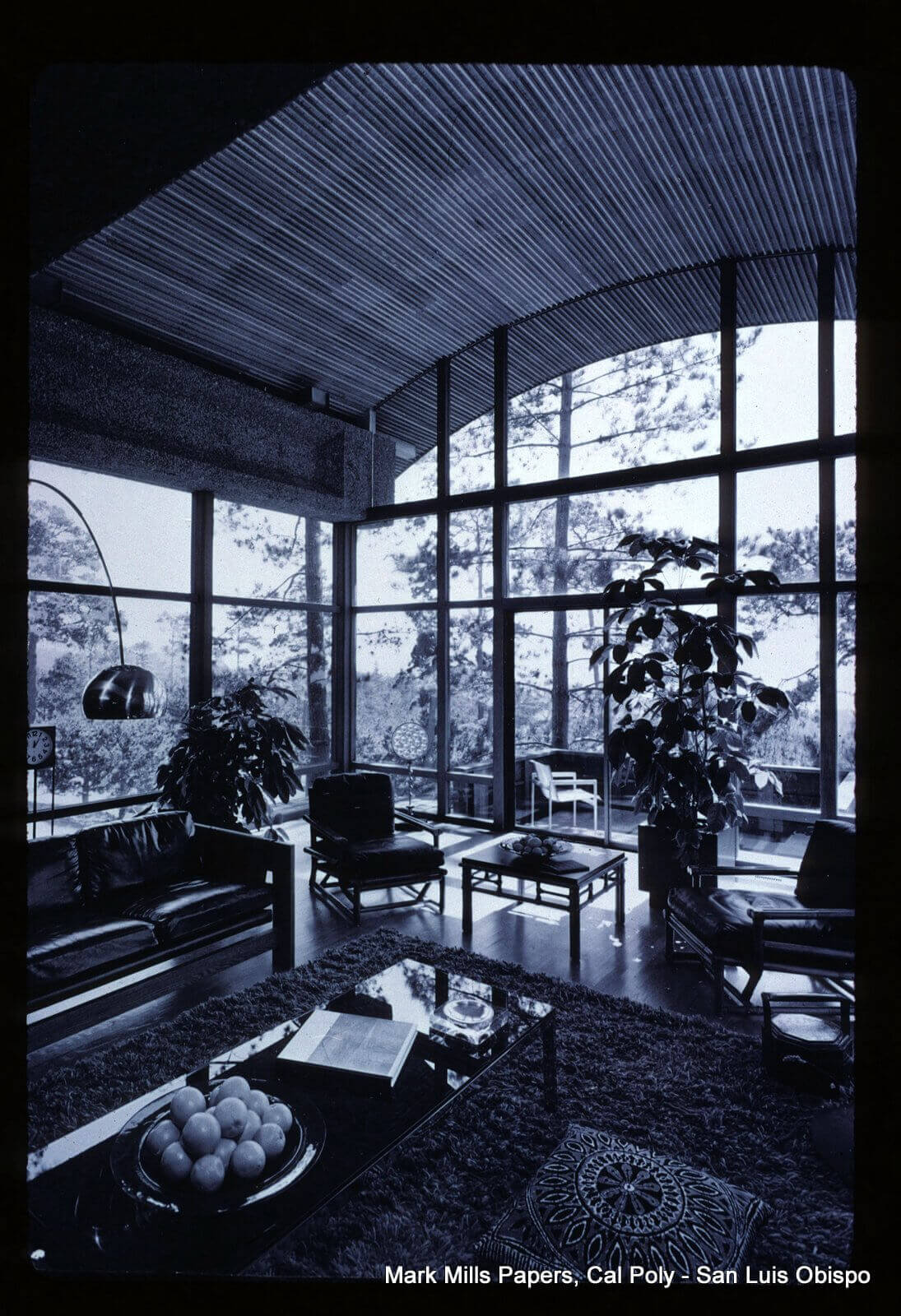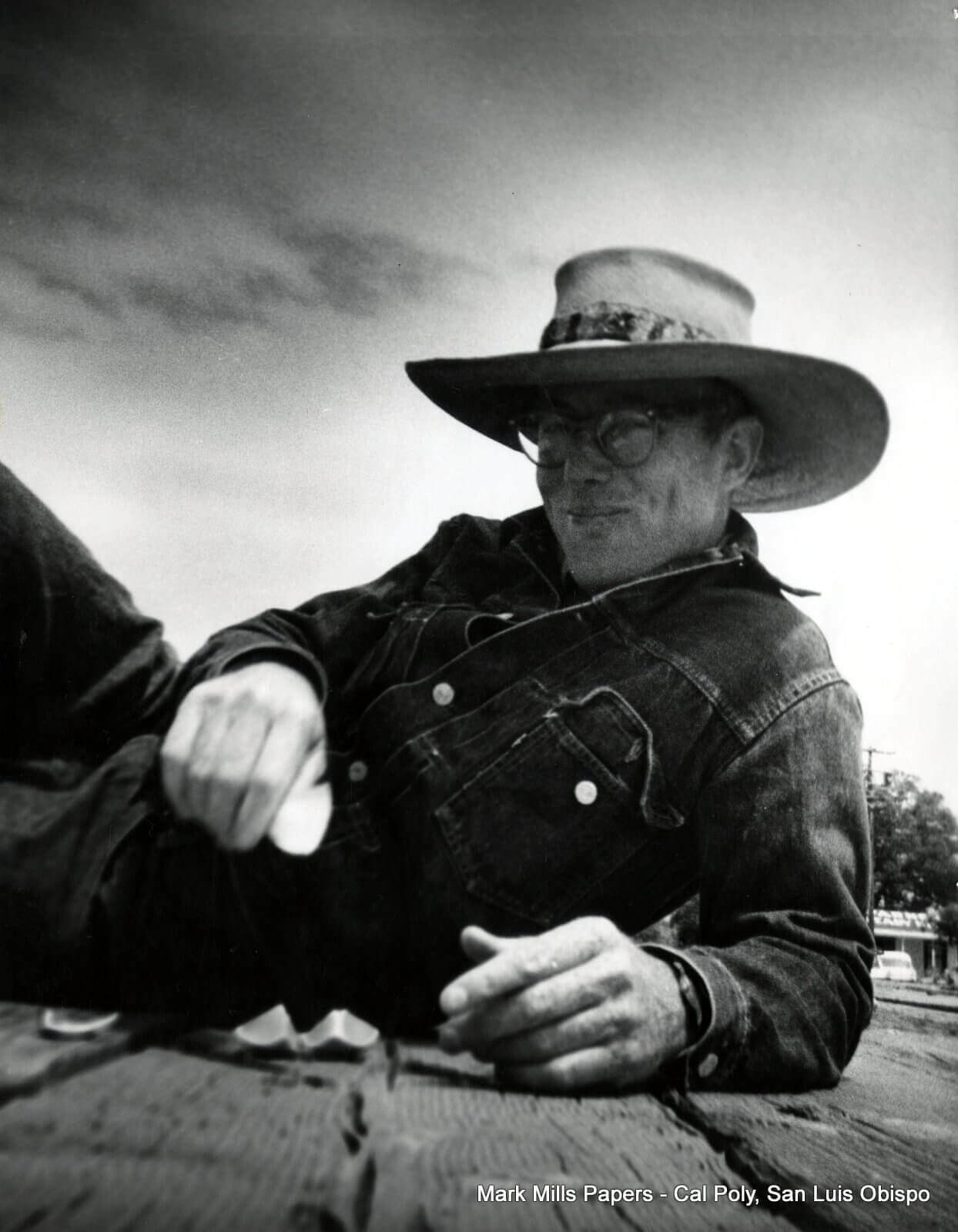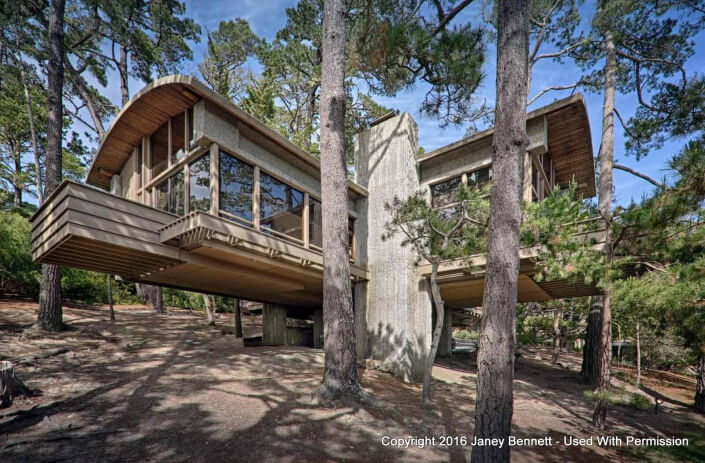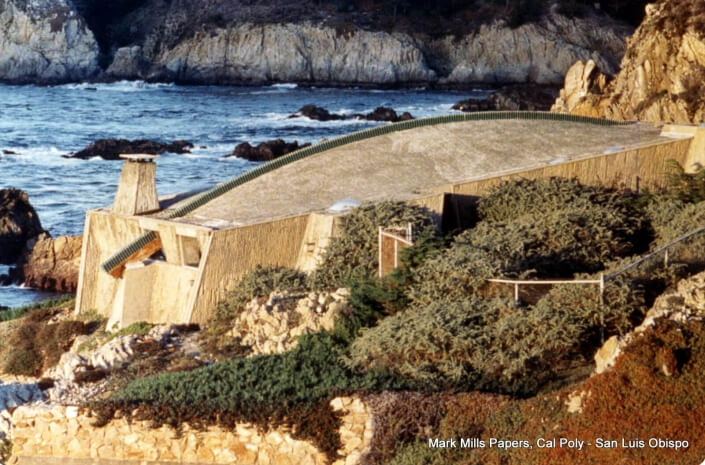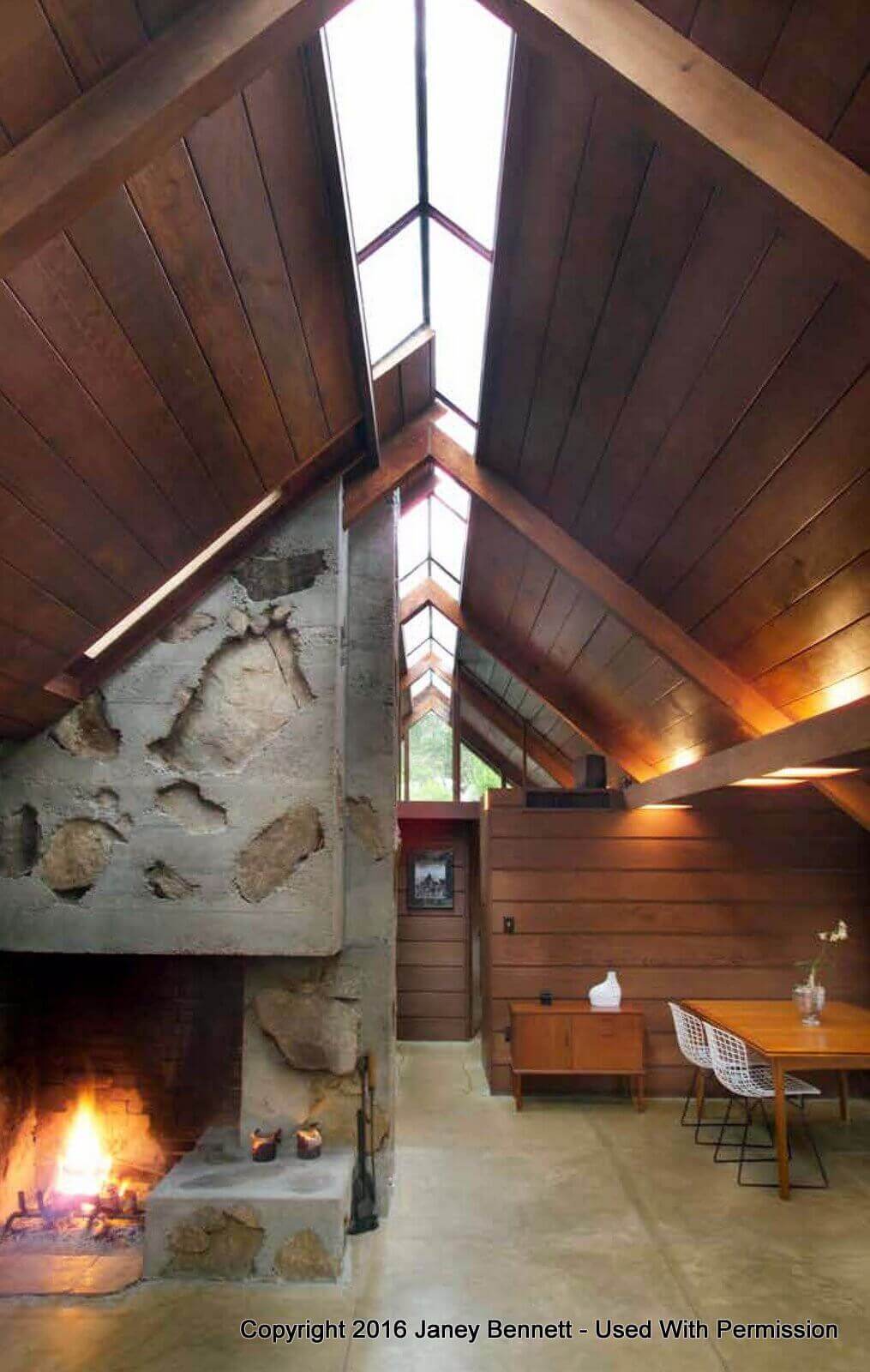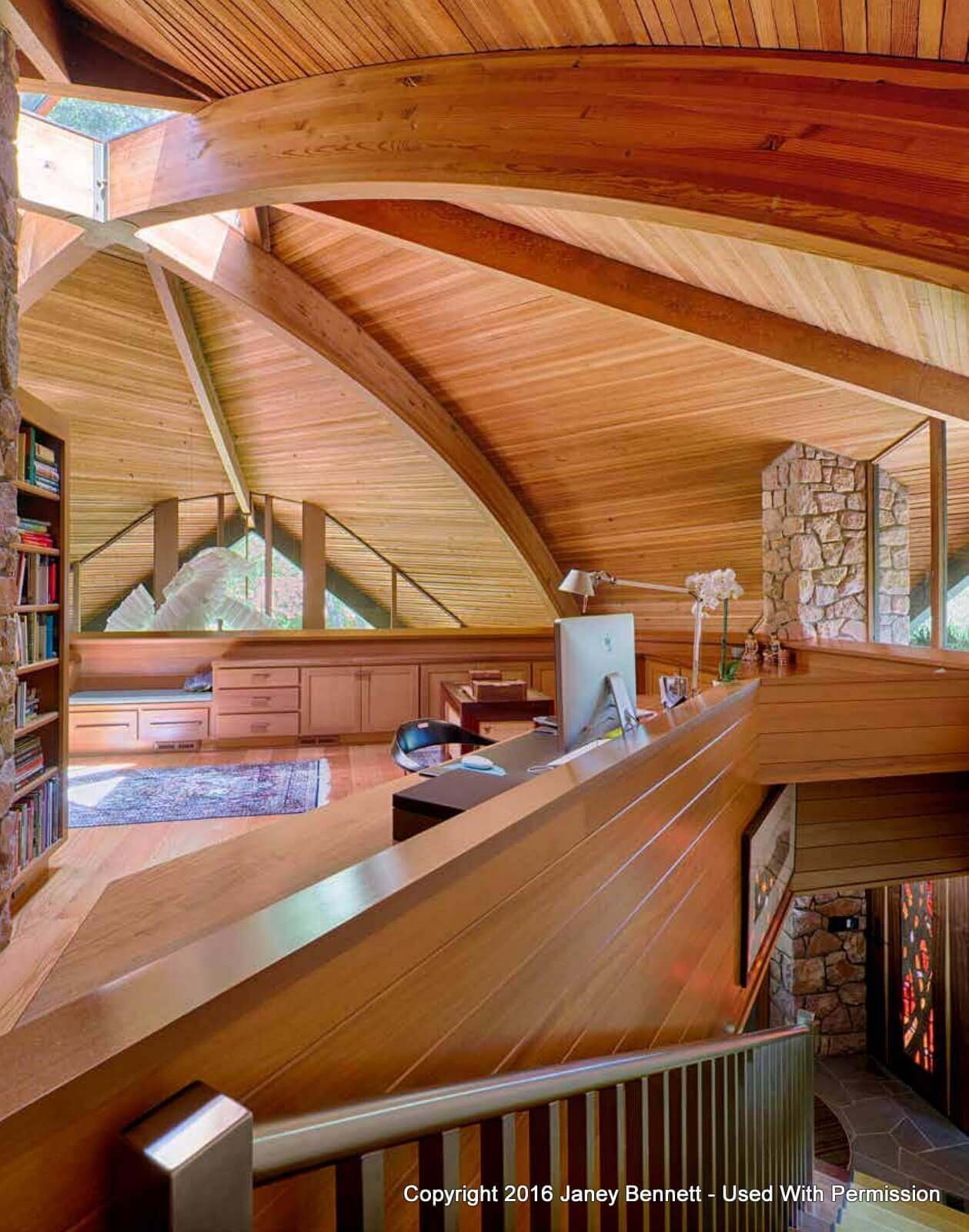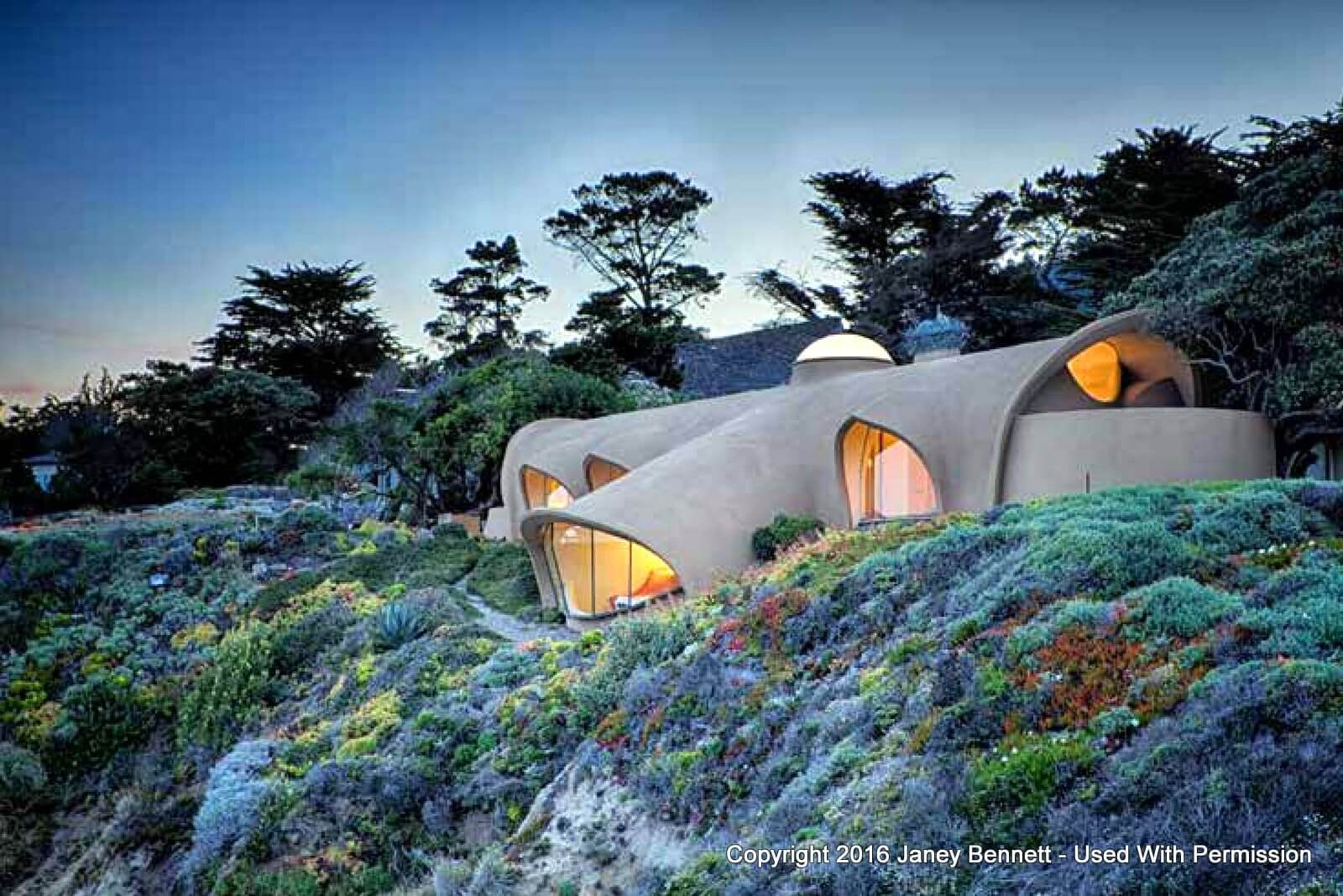“My client is nature.”
— ARCHITECT MARK MILLS
I must confess – prior to listing 215 Locust Avenue in San Rafael, California for sale, I had not heard of the talented architect, Mark Mills (1921-2007) who designed it. As I began to research the history of the home, I learned so much about this understated and talented man that I decided to write a blog article focusing on his work. I assumed that potential buyers might be interested in Mills, who worked with Frank Lloyd Wright early in his career. Expecting to find only a Wikipedia entry on Mills, I was delighted to find a Mark Mills Collection at the California Polytechnic State University (“Cal Poly”) as well as an upcoming book about Mills’ work titled “The Fantastic Seashell of the Mind: The Architecture of Mark Mills.” Please scroll down to see a few of the photos from the Cal Poly collection as well as the upcoming book by Janey Bennett.
Architect Mark Mills: The Early Years
Mark Mills was born in 1921 in Jerome, Arizona where his father managed the local copper mine. Early in life he was exposed to the carpenters who were employed by the mine to maintain the mine’s infrastructure after blasting. Mills graduated with a Bachelor of Science degree in Architectural Engineering from the University of Colorado. Shortly after graduating, Mills was interviewed by the renowned architect Frank Lloyd Wright to apprentice at his Taliesin West winter home and training center in Scottsdale, Arizona, where he spent four years working under Wright learning about design and construction, as well as how to sing, how to clean out a septic system, and even how to milk a mare!
“Deeply connected to the desert from which it was forged, Taliesin West possesses an almost prehistoric grandeur. It was built and maintained almost entirely by Wright and his apprentices, making it among the most personal of the architect’s creations.”
— THE FRANK LLOYD WRIGHT FOUNDATION
Mills left Taliesin with his colleague Paolo Soleri in 1948 and they designed and constructed the “Dome House” a model of which is featured in New York’s Museum of Modern Art. The pioneering home was constructed of concrete — one of his later hallmarks — and featured a glass dome with panels that could be moved to follow the sun, offering passive solar heating way ahead of its time.
Mills then moved to the San Francisco area, briefly working on designs for Joseph Eichler before ultimately settling in Carmel, spending the rest of his life designing beautiful (mostly) coastal homes designed in harmony with their surroundings with an emphasis on locally-sourced and recycled materials. Mills custom-designed each home, rarely repeating his designs, and he sketched each one himself by hand on paper once he had completely visualized that home in his head. His drawings are famous for their precision – you won’t find erasures or corrections on any of them.
“I think you are an authentic genius! People are fearful of genius because they have seldom experienced the direct, creative contact therewith!!”
— ANSEL ADAMS IN A LETTER TO MARK MILLS
Architect Mark Mills: His Body of Work
Mill designed more than 40 homes and most were in the Monterey Bay area, according to author Janey Bennett. The home at 215 Locust is the only Mills design in Marin that we have been able to find in his archives, and until this home went on the market most did not know of a Mills home here. I believe the video we will create for the home will be the only widely-available video of a Mills home. He was that rare designer that fully understood construction and implementation, down to the location of light switches (often hidden).
The original owner of the home was an artist specializing in a technique called “slump glass.” Many of Mills’ homes including 215 Locust feature slump glass art which looks like stained glass to the untrained eye. I speculated that the owner may have had a hand in the glass at some of Mills’ other homes, but speaking with Janey Bennett it sounds unlikely.
Mills never sought the spotlight, but was featured in a number of popular magazines over the years, including House Beautiful, Life, Ladies Home Journal, Dwell and Carmel. In 2009, just two years after his death, Architectural Digest referred to him as one of the world’s top architects. Sadly, one of his masterpiece homes built in 1966, the Farrar Home which also also known as the “Far-A-Way” and the “Copper Spine House” was demolished in 1995 after an unsuccessful battle to prevent its demolition.
I have included photos of several of Mills’ homes, including the Copper Spine House, in the gallery below. While you look through them, think of this unassuming man who lived in Wright’s shadow for a period but was so gifted in his own right, and who designed homes whose form and function endure today in beautiful harmony with their surroundings.
“He was superbly skilled with the techniques his inventive designs required: he was a fine engineer, and he was able to use that skill to create new forms. He was both smart and naive, he linked reality and fantasy, he loved what he did, he thought of little else but designing, and he did it with joy.”
— JANEY BENNETT, Author of “The Fantastic Seashell of the Mind.”
Photo Credits and Citations / Further Reading:
In compiling this brief summary, I relied extensively on the “Mark Mills Papers” collection at the California Polytechnic State University (“Cal Poly”). My gratitude to Cal Poly architecture graduate Cailin Trimble-Swarm for all the work she and the library archivists performed to compile, catalog and scan the collection. Serendipity brought me to Janey Bennett, author of the upcoming book “The Fantastic Seashell of the Mind: The Architecture of Mark Mills,” who was immensely helpful with my crash course on Mark Mills. I hope to personally show 215 Locust Avenue to Janey. Also I must give credit to Catherine J. Trujillo, who wrote the article, Coastal Modern: Architect Mark Mills for KCET back in 2012. With sadness, I also drew from Mill’s obituary for additional biographical information.




